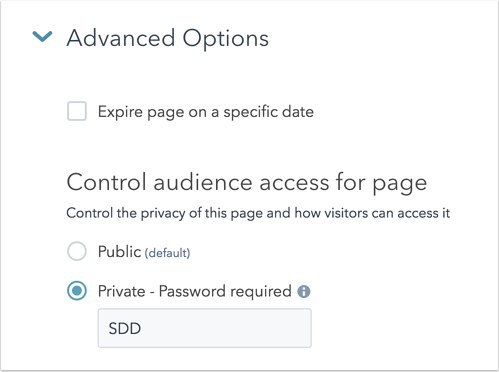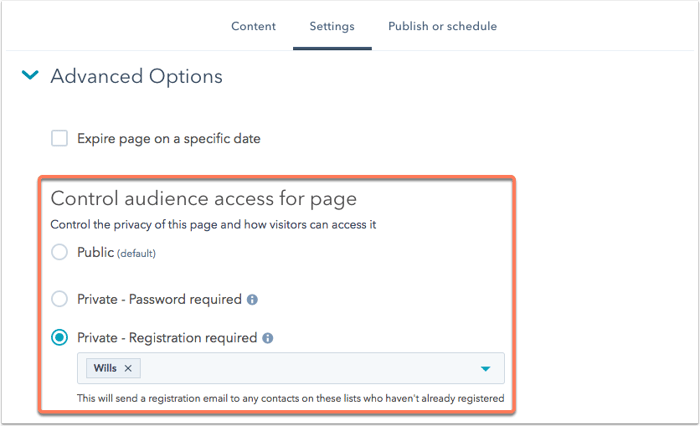In this blog post, we discuss how to set up password-protected content in HubSpot, why it could add value to your business and the considerations and limitations of doing so.
We’ll cut to the chase. Yes, the HubSpot CMS allows you to password-protect your content, and easily at that.
But why would you want to make some areas of your HubSpot website private and others not? Password-protecting a page lets you offer exclusive content like white papers and eBooks to customers of your choice, as well as to hide information that may not be relevant to certain audiences. You can also:
-
Password-protect pages to house collateral for your marketing and sales teams.
-
Create a client-only page that functions as a knowledge base with tailored content such as templates, guides, and troubleshooting documents.
-
Restrict access to areas of your website that are still under development or being built.
Check out the other cool HubSpot Enterprise tools and features here.
Setting up a password-protected page
To password-protect content in the HubSpot CMS:
- Go to Marketing > Website and select either landing pages or website pages.
- Choose the page you want to password-protect and click Edit.
- This will take you to the page editor. Click the Settings tab and then expand Advanced Options.
- Beneath Control audience access for page, choose Private - password required.
- Enter your password in the text field and then click Update or hit Publish. Done — your changes are now live!

Image courtesy of HubSpot
Limitations and considerations for password-protected pages
Search engines are unable to crawl through any of your HubSpot password-protected pages and sensitive data will not be encrypted. This means that links housed on these pages can still be accessed by unauthorised users (unless you set up password protection for these pages too).
Personal information should not be present on these pages, as single-password protection does not offer the level of encryption necessary to protect sensitive data.
Currently, the password protection features do not extend to blog posts. But, according to HubSpot, those with CMS Hub Enterprise accounts can authorise audience access to pages and blogs based on list membership or password protection.
Configuring a login or membership registration for website pages
To configure membership registration for website pages in the HubSpot CMS:
- Go to Marketing > Website and select either landing pages or website pages.
- Choose the page you want to password-protect and click Edit.
- This will take you to the page editor. Click the Settings tab and then click on Advanced Options to expand the extra settings.
- From Control audience access for page, choose Private - Registration required.
- From there, choose the lists of contacts you want to register for membership or access to the page. Click Save and send email.
When you update or publish the page, a registration email will be sent to the contacts you’ve selected. Upon visiting the link in the email, users will be prompted to register an account to access the page. HubSpot will add a cookie to the user’s web browser so that they won’t be asked to log in to the same page again.

Image courtesy of HubSpot
Limitations and considerations for login/membership pages
As with the password protection feature, making a page private does not encrypt the information contained therein, and should not be used to house sensitive information. Search engines also won’t be able to crawl through these pages.
Membership registration is only available for connected subdomains that you own. This means that you can’t initiate the login feature for content that’s housed on your HubSpot account’s default subdomain. For example: hs-sites.com.
Membership registration can only be accessed in the HubSpot Marketing Hub Enterprise suite.
Gated content is just one facet of the HubSpot ecosystem
Password-protecting web pages and content gives your more control over the customer experience. From populating a knowledge base that incentivises self-service to offering exclusive, premium content to valued clients, there is a wealth of opportunity for businesses to grasp.
But that’s just scratching the surface of what the HubSpot ecosystem offers.
HubSpot is Huble Digital’s platform of choice for customer-centric sales and marketing that gives clients real value and fuels business growth. From its infrastructure that scales with your business, to its suite of tools that analyse and forecast customer activity with precision, we can deploy the best technology on the market to transform your business.









.png)





